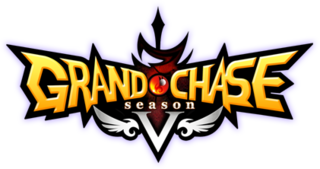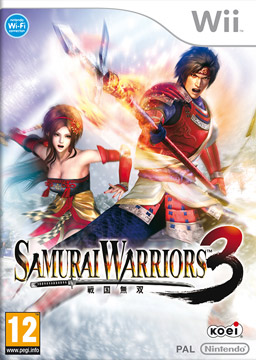
In Japan, mobile phones became ubiquitous years before the phenomenon spread worldwide. In Japanese, mobile phones are called keitai denwa (携帯電話), literally "portable telephones," and are often known simply as keitai (携帯).
A massively multiplayer online game is an online video game with a large number of players on the same server. MMOs usually feature a huge, persistent open world, although there are games that differ. These games can be found for most network-capable platforms, including the personal computer, video game console, or smartphones and other mobile devices.

Nakoruru is a fictional character in the Samurai Shodown series of fighting games by SNK. She is one of the series' best known and most popular characters alongside its main protagonist Haohmaru, and has been introduced in the original Samurai Shodown in 1993. Nakoruru is a good-hearted, young Ainu shrine maiden who loves nature and fights evil with the help of her hawk sidekick Mamahaha. She has a younger sister named Rimururu and an aggressive, and bloodthirsty darker side alter-ego known as Rera. As one of SNK's popular mascot characters, Nakoruru has also appeared in many other games and other media.

Samurai Warriors is the first title in the series of hack and slash video games created by Koei's Omega Force team based closely around the Sengoku period of Japanese history and it is a sister series of the Dynasty Warriors series, released for the PlayStation 2 and Xbox in 2004. A port of this game called Samurai Warriors: State of War has been released for the PlayStation Portable, which includes additional multiplayer features.

Online Bomberman was a 2003 online game of the Bomberman franchise developed by MGAME Corporation and Hudson Soft, and was released for Microsoft Windows in Japan, South Korea, Taiwan, Hong Kong and Macau. All servers have been permanently shut down. However, there is a fan-based version.

Samurai Warriors 2 is a sequel to the original Samurai Warriors, created by Koei and Omega Force. The game was released in 2006 for the PlayStation 2 and Xbox 360, and ported to Microsoft Windows in 2008. Like the Dynasty Warriors series, an Empires expansion was released as well, and an Xtreme Legends expansion followed on August 23, 2007, in Japan. The game, alongside its two expansions, Xtreme Legends and Empires also receive a HD-enhanced port for PlayStation 3 and PlayStation Vita under the name Sengoku Musou 2 with Moushouden & Empires: HD Version.
eBaseball Powerful Pro Baseball, previously known as Jikkyō Powerful Pro Yakyū and marketed internationally as Power Pros, is a Japanese baseball video game series created by Konami. The game is known for its super deformed characters, and fast-paced but deep game play. Most games in the series are developed under license from the Nippon Professional Baseball (NPB) and the Japan Professional Baseball Players Association (JPBPA), letting them use the league's team names, stadiums, colors, and players' names and likenesses. There are also six games in the series with the Major League Baseball (MLB) and Major League Baseball Players Association (MLBPA) license, two with the Korea Baseball Organization (KBO) and Korea Professional Baseball Players Association (KPBPA), and one with the World Baseball Classic license. It is long running in Japan, starting out in 1994 for the Super Famicom, and appearing on many different consoles: Saturn (1995–1997), PlayStation (1994–2003), Nintendo 64 (1997–2001), PlayStation 2 (2000–2009), Dreamcast (2000), GameCube (2002–2006), Wii (2007–2009), PlayStation 3 (2010–2016), PlayStation 4 as well as PlayStation Portable (2007–2013) and Vita (2012-2018).

The Dial-up Wide-Area Network Game Operation, better known by the acronym DWANGO, was an early online gaming service based in the United States. Launched in 1994, it was originally known for its compatibility with Doom, for which it functioned as a matchmaking service for online multiplayer. The service also supported various other titles, including other id Software games such as Doom II and Heretic as well as titles from other companies like Duke Nukem 3D, Blood, and Shadow Warrior from 3D Realms.

Grand Chase was a free-to-play, two-dimensional side-scrolling MMORPG, developed by the South Korean company KOG Studios. Alternative names for Grand Chase included Three Young Heroes, Eternal Adventures, both used in Taiwan prior to its closure, as well as Rainbow Warriors on the Mainland Chinese server.

Samurai Warriors 3 is the third installment in the Samurai Warriors series, created by Tecmo Koei and Omega Force. The game was released in Japan on December 3, 2009, in Europe on May 28, 2010, in Australia on June 10, 2010, and in North America on September 28, 2010, for the Wii.

Tales of VS. is a crossover fighting game featuring various characters across the Tales video game series. It was developed by Matrix Software and published by Namco Bandai Games for the PlayStation Portable on August 6, 2009 in Japan. It was not localized for release in any other regions.

Dynasty Warriors: Gundam 3, known in Japan as Gundam Musou 3, is a tactical action video game based on the Gundam anime series and the sequel to 2008's Dynasty Warriors: Gundam 2. It was developed by Omega Force and published by Bandai Namco. The game was revealed in the September issue of Famitsu and was released on December 16, 2010 in Japan, June 28, 2011 in North America, July 1, 2011 in Europe, and July 12, 2011 in Australia.

PangYa was an online multiplayer casual golf simulation game designed by Korean development company Ntreev Soft and NCSoft.

Puzzle & Dragons is a puzzle video game with role-playing and strategy elements, developed and published by GungHo Online Entertainment for the iOS, Android, and Amazon Fire platforms.

Samurai Warriors 4, known in Japan as Sengoku Musou 4 (戦国無双4), is a hack and slash game by Koei Tecmo, and sequel to Samurai Warriors 3. Unlike past Samurai Warriors games, this one only has Japanese voice overs.

Arena of Valor, formerly Strike of Kings, is an international adaptation of Honor of Kings, a multiplayer online battle arena developed by TiMi Studio Group and published by Level Infinite for Android, iOS and Nintendo Switch for markets outside Mainland China. As of September 2018, the game has grossed over $140 million outside China. Arena of Valor was one of six Esports video games featured at the 2018 Asian Games, 2019 Southeast Asian Games, 2021 Asian Indoor and Martial Arts Games, and 2021 SEA Games as part of the competitive sport. Arena of Valor was published in other regions by Garena, DeNA, Actoz SG, and TiMi Studio Group.

Azur Lane is a side-scrolling shoot 'em up video game created by Chinese developers Shanghai Manjuu and Xiamen Yongshi, released in 2017 for the iOS and Android operating systems. Set in an alternate timeline of World War II, players engage in side-scrolling shooter gameplay, using female moe anthropomorphic characters based on warships from the war's major participants. Other gameplay elements, like customizing a dorm and in-game characters, are also present.
Princess Connect! Re:Dive is a Japanese role-playing video game developed by Cygames. It was released in Japan on February 15, 2018 for Android and iOS, and on May 22, 2018 for Microsoft Windows via DMM Games. Mobile version would later be released in other regions.

The King of Fighters All Star (KOFAS) is a beat 'em up action role-playing game developed by Netmarble Neo and published by Netmarble. It was first released in Japan on July 26, 2018, for the iOS and Android. The game is a retelling of SNK's The King of Fighters games with the player being able to create their own team as they battle across multiple annual tournaments. It was released in English regions on October 22, 2019. A Microsoft Windows version is also available, starting from its beta version on February 10, 2022.

Gundam: Battle Assault is a 1998 fighting video game developed by Natsume Co., Ltd. and published by Bandai for the PlayStation. Based on the Gundam franchise, it is a follow-up to Gundam: The Battle Master (1997), which was released only in Japan. The plot involves Heero Yuy, protagonist of Mobile Suit Gundam Wing and pilot of the XXXG-01W Wing Gundam, on a mission to destroy remaining enemy Mobile Suits under command of Treize Khushrenada to stop a war from starting. Its gameplay consists of one-on-one fights, with a main six-button configuration, featuring special moves and two playable modes, while players can select any available mech to battle against enemies in story mode.
















